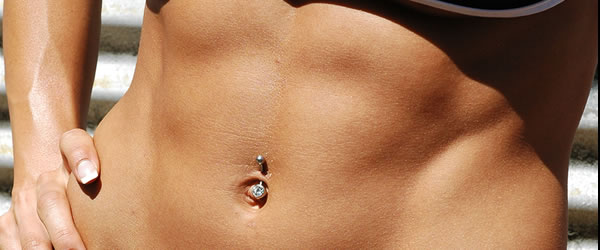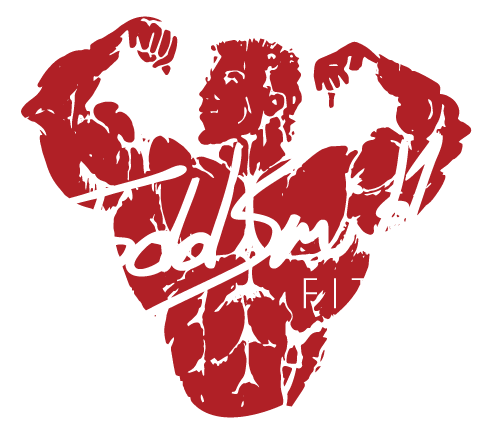When most people begin dieting they are usually under the impression that eating less often or skipping meals will do the trick. I have a good friend who once told me, “I skip breakfast in order to bring my calorie intake down everyday.” This, actually, is the worst thing that you can do when you are dieting. Eating sporadically, only when you are hungry, and going long periods of time without eating stimulate fat storage and make your fat cells LARGER.
There are two reasons why metabolic confusion happens: One, when you have excess amounts of calories they are packed away as body fat. Two, going a long period of time without eating and then eating a large meal forces your body to go into “flight or fight” mode and it begins to hold on to the fatty acids because your body is unsure when you will eat again. This is called the caloric perception theory (CPT).
We have all done this. For instance some peoples diets look like this over a seven day cycle: (Diet for a 180 lb male with 15% body fat – this person needs 1680 calories to survive/day *see BM example)
Monday: 2000 calories
Tuesday: 1450 calories
Wednesday: 2300 calories
Thursday: 1700 calories
Friday: 1850 calories
Saturday: 3800 calories
Sunday: 1100 calories
This seven day look at an individual’s diet is pretty common. On Monday, he begins his week with 2000 calories and cuts back to 1450 calories on Tuesday. Because of this reduction the body gives up some body fat as fuel because of the variance it will induce fat loss. On Wednesday, the individual consumed 2300 calories which is 300 more than 2000 and the body is thrown for a loop not knowing what to do – it may store the fat or it may burn the fat as fuel.
On Thursday, the individual lowers the caloric intake and again, the body is confused whether to store the fat or use it as fuel. This goes on the rest of the week until we get to Sunday. The individual on Saturday engaged in a very high calorie day and decides to under eat on Sunday in order to make up for overeating on Saturday. The body now enters the “flight or fight” and without a doubt, it will store fat in this situation.
To avoid this problem, an individual needs to eat the same amount of calories a day and the same number of meals (5-6). This is called a base diet. The amount of insulin released will be controlled and will not give the body conflicting signals. The body’s metabolism will become more regular and it will be less likely to store fat.
After establishing a base diet, the individual should add exercise (weight training). Eating a base diet and weight training will burn energy coming from fat storage and it will boost your metabolism.
A lot of people do this, but the kind of exercise they add to their regimen is aerobic. While aerobic exercise will burn off additional calories it will also get used to this and begin to burn less calories for constant work loads. Thus, adding weight training is the best solution. Weight training will add more lean muscle allowing your metabolism to stay boosted.
Plateaus
With a diet and exercise plan going hand in hand, it is possible for your body to plateau. This means that additional fat loss becomes more and more difficult and the individual does not see any more weight being shed. This problem is very common and will happen at sometime with your work-out and diet regimen. Usually when this happens, the individual changes their diet by depleting calories and adding more exercise. This will help your body overcome the plateau but will also lead to fatigue, which leads to your body wanting to accumulate fat. Therefore, the resolution is: when you begin to plateau, change one thing at a time in order to prevent body fatigue and control over your weight loss.
How to Overcome Plateaus
Excess carbohydrates can be stored in three different places in the body; in muscle as muscle glycogen, in liver as liver glycogen and in fat cells as body fat. When muscle and liver glycogen stores are full, carbohydrates will be stored as body fat. When body fat levels are decreasing, it may be because glycogen stores are never full, which is a contributor in the body’s fat loss plateau. This is due to the body pulling glucose out of the blood and storing it as glycogen as the main fuel source for weight training. The problem with this is that the body begins to get used to storing muscle glycogen and once the glycogen stores are full it will, again, store carbohydrates as body fat. Thus, the answer is to cut back on 40% of your carbohydrates for three to five days in order to reduce muscle glycogen stores. This will cause a metabolic shift so that additional fat is used for energy supporting fat loss.
After three to five days of lowering carbohydrate intake by 40%, the individual can return to a higher carbohydrate intake and the extra carbohydrates will refill muscles with glycogen. The body’s glycogen stores will have more room to store the carbohydrates because it will lower blood sugar and insulin levels initiating more fatty acids to act as fuel for the body.
Guidelines to reducing carbohydrate intake after a plateau:
1. Reduce carbohydrates by 40% for 3-5 days.
2. Increase carbohydrates by 15% higher on the 4th day or 6th day.
Example:
| Normal Carbohydrate Intake | 40% Reduction | 15% Increase |
| 280 | 168 | 322 |
The lower carbohydrate to higher carbohydrate stimulates fat breakdown for three to five days making the body increase in temperature, which stimulates fat breakdown. After the three to five days of reduction, increasing carbohydrates by 15% will give your body a metabolic boost saving or building more muscle tissue in order for you to stay lean. This will happen in the body because it will begin to store carbohydrates as glycogen rather than fat.
Although this may sound complicated, it really is quite the opposite. The low carbohydrate to high carbohydrate rotational diet is easy for most people to apply to their diet because it allows a single day where carbohydrates are not severely restricted and you can satisfy some of your cravings for some things like pasta. But remember, this type of diet is only to be used by individuals who have already established a base diet and have begun to plateau.





